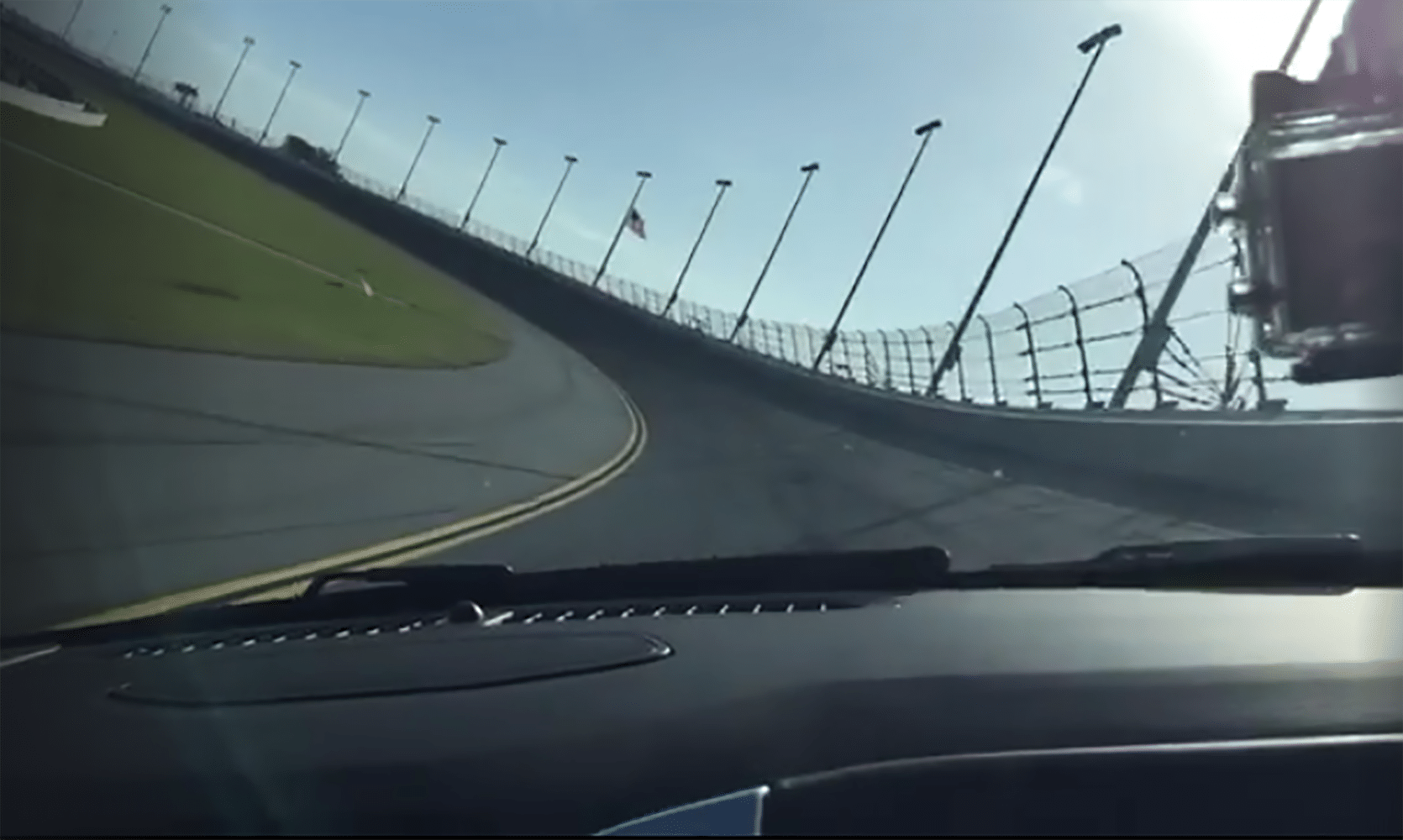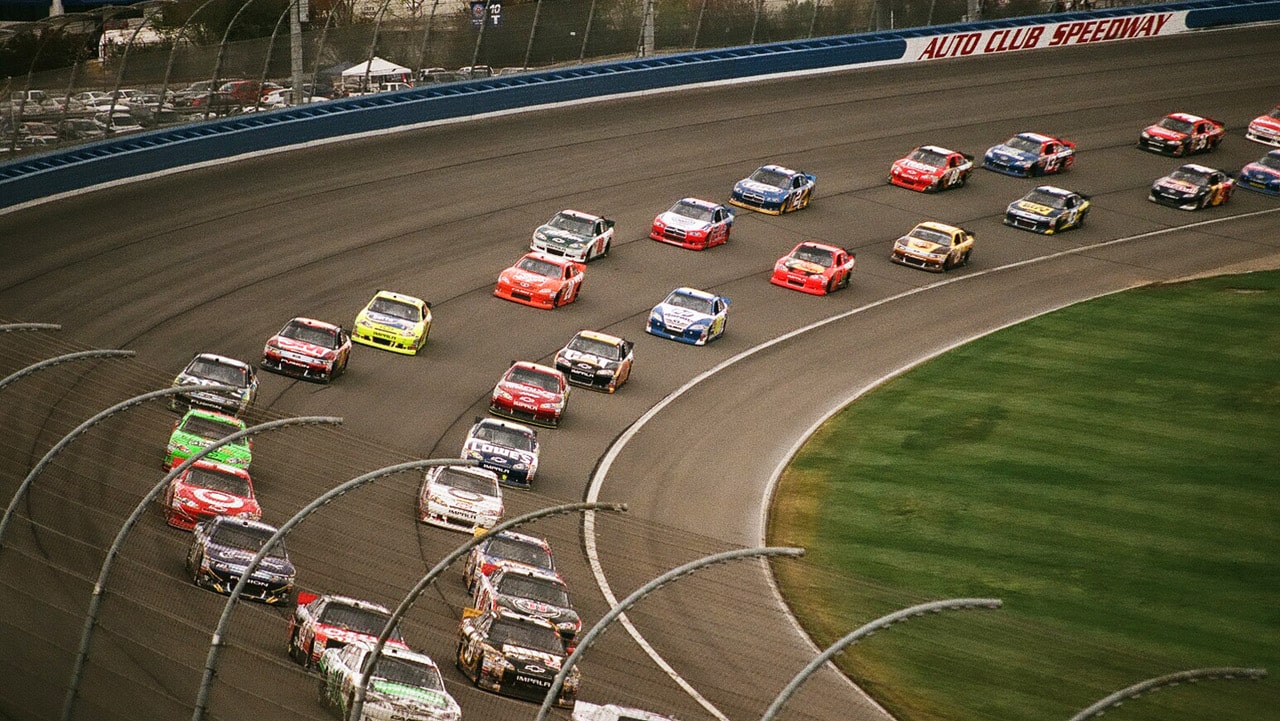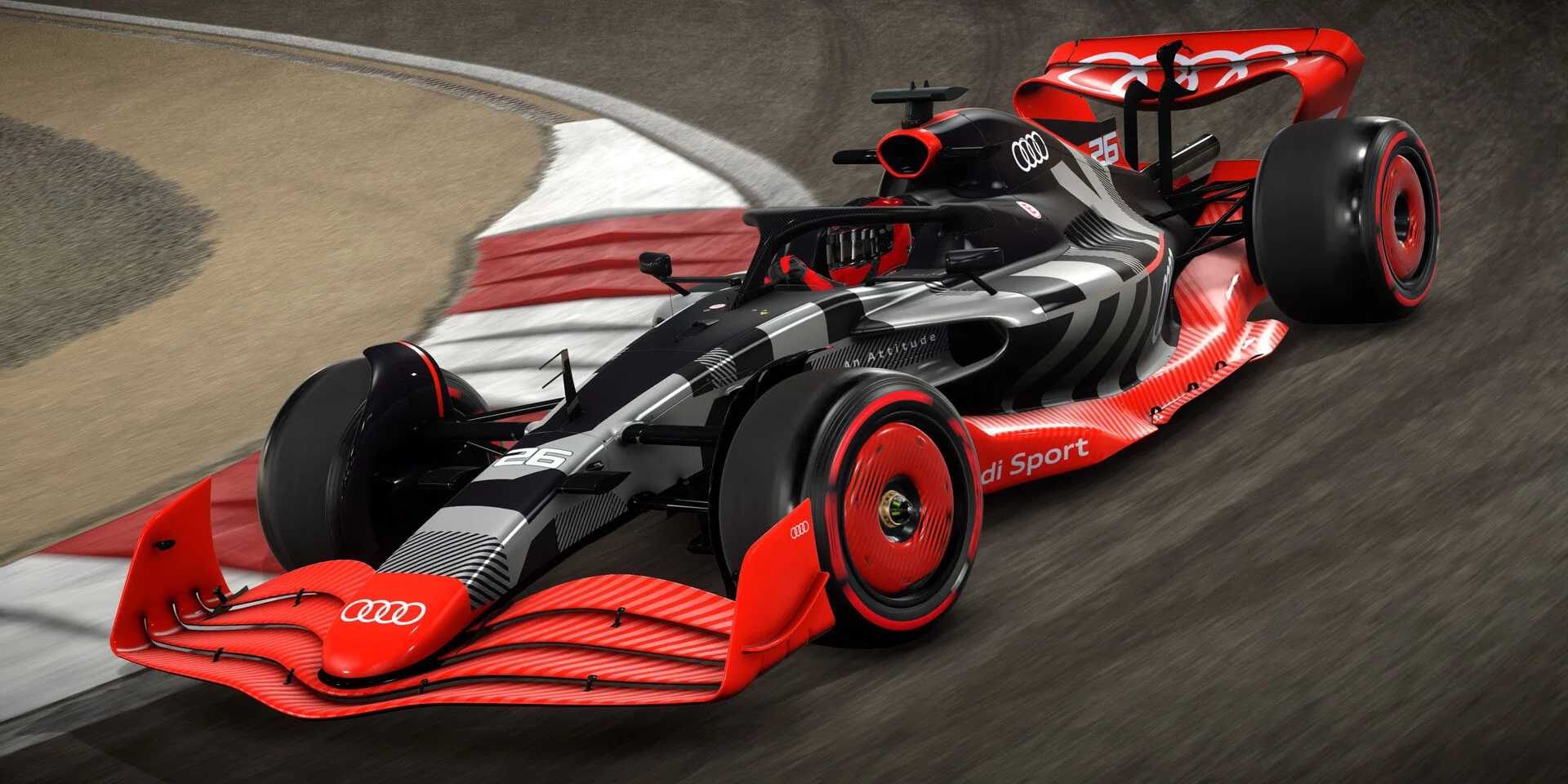NASCAR, the National Association for Stock Car Auto Racing is a motorsport with an ancient history.
The design and speed of NASCAR tracks have undergone significant changes.
The story behind these songs is well-known.
Table of Contents
Top 5 Fastest NASCAR Tracks
Michigan International Speedway
The Sprint Cup circuit’s fastest track is Michigan International Speedway.
The newly repaved road and its two-mile length allow drivers to drive at incredible speeds.
The fastest non-restrictor plate speed in NASCAR history was achieved by Marcos Ambrose, who lapped at 203.241 mph on June 6, 2012.
Michigan International Speedway’s record-breaking speed is a testament to the strength and agility of NASCAR vehicles on an especially fast track.
Atlanta Motor Speedway
Marcos Ambrose set a new record for the fastest single-lap lap at Atlanta Motor Speedway, which was also held by another fast track with no restrictions.
This track’s speed is highlighted by Geoffrey Bodine, who set the previous record of 197.478 miles in 1997 at speeds that are still impressive today (again).
The exceptional design and surface of Atlanta Motor Speedway make it a driving-car race destination, with its fast speeds.
Texas Motor Speedway
Texas Motor Speedway has been a consistent fast track on the NASCAR schedule.
Brian Vickers utilized the newly paved track to set an impressive lap record in 2006, reaching speeds of 1921.
Texas Motor Speedway’s fast-paced events offer exciting opportunities for both drivers and spectator.
The fast-paced and challenging conditions of Texas Motor Speedway make it a top choice for NASCAR racers.
The Daytona International Speedway
Daytona International Speedway is renowned for its restrictor plate racing, making it one of the most iconic tracks in NASCAR.
Although speeds set during practice and test sessions do not count toward official records, Carl Edwards secured pole position in Daytona 500 qualifying this weekend with lane lap 194.738 (mph).
The restrictor plate requirement and the high speeds at Daytona International Speedway add another layer of significance to lap records.
Charlotte Motor Speedway
The lap record set by Greg Biffle of Charlotte Motor Speedway, also known as CMS in the US is 193.708 mph.
Talladega Superspeedway’s top restrictor plate speed is surpassed by this record, emphasizing the potential for rapid performance on track.
The one-lap speed of Charlotte Motor Speedway makes it both exciting for spectators and a demanding track.
Other Notable Fast NASCAR Tracks
Talladega Superspeedway
The all-time NASCAR track record was achieved by Talladega Superspeedway in 1987, when Bill Elliott clocked an impressive 212.809 times per hour.
The introduction of restrictor plates in 1988 caused a decrease, which was also observed at Tallodega and Dayton.
In 2006, David Gilliland achieved the fastest qualifying lap at Talladega since 2000 with 190.264 km/hr (191.712mph).
Talladega Superspeedway is known for its fast speeds and layout, earning it the title of one among NASCAR’s fastest tracks.
Kansas Speedway
Kansas Speedway has experienced breaking lap records in recent years, thanks to its smooth surface and high speeds.
With a qualifying time of 191.360, Kasey Kahne set the track record in 2017.
Kansas Speedway’s fast-paced environment is both thrilling and demanding for drivers.
Kansas Speedway’s new surface and unique design have made it a fast track in the NASCAR circuit.
Las Vegas Motor Speedway
Multiple track records have been achieved at Las Vegas Motor Speedway throughout its history.
In 2007, Kasey Kahne set the record for most mph, but in 2011, Matt Kensheth achieved an even faster time with his second lap of 184.855.
The 2012 record was beaten by Kasey Kahne, who lapped at 190.456.
Las Vegas Motor Speedway is a favorite among both drivers and enthusiasts due to its impressive speeds.
Auto Club Speedway
The previous record holder was California Speedway, which now stands as Auto Club Racetrack with an impressive lap count of 192.068 mi.
This qualifying record was set by Kyle Busch for the Auto Club 500 in February 2005.
Auto Club Speedway and Michigan State speedways are different in their speeds due to the fact that they have separate tracks, with one track being longer than another.
The high speeds and twists at Auto Club Speedway make it a driving track that thrill-seekers flock to.
Chicagoland Speedway
In 2005, Jimmie Johnson set a record by driving at Chicagoland Speedway with an average speed of just over 220 km/h (175 mi) per hour (188.147 in 30 minutes).
The track’s short length of 1.5 miles, which is similar to Michigan Speedway in banking style and notably faster than any other speed on the circuit.
The NASCAR schedule highlights Chicagoland Speedway’s fast speeds and strategic racing.
Early NASCAR Tracks

The first NASCAR races were held on dirt tracks when it was established in 1948.
The tracks were typically shorter and did not have the level of banking or high speeds found in contemporary NASCAR circuits.
They were usually small, and often in the countryside.
The popularity of NASCAR led to a preference for larger and faster tracks.
The outcome was the establishment of superspeedways.
Introduction of Superspeedways
Superspeedways started to emerge in NASCAR during the 1960s.
The tracks were of a larger size, usually two miles or more long and had elevated banking in the turns.
This facilitated faster speeds and more thrilling races.
The Michigan International Speedway was among the first superspeedways in history to be established, known for their rapid speeds.
NASCAR’s new superspeedways were a source of excitement, as drivers drove faster lap times to achieve the track.
The increase in speed posed greater risks, leading to NASCAR’s focus on safety improvements.
Changes in Track Design and Surface
NASCAR tracks have experienced many changes in their design and appearance over the years.
Asphalt or concrete tracks are often worn out, causing the cars to lose their grip and speed.
To improve grip and create a smoother surface, tracks are frequently revitalised.
Also, modifications in the banking of turns have caused NASCAR tracks to move at a faster pace.
The cars’ ability to maintain traction and stability during turns is enhanced by higher banking speeds.
Daytona International Speedway is renowned for its high banking, which highlights this.
Safety Improvements on NASCAR Tracks
The need for safety improvements on NASCAR tracks was prompted by the increase in speeds.
NASCAR has taken steps to safeguard drivers by implementing SAFER barriers, upgraded seat belts and enhanced car construction.
The risks associated with high-speed racing have been reduced thanks to these advancements.
Factors that Contribute to the Speed of NASCAR Tracks
The speed of NASCAR tracks is determined by various factors.
Let’s examine these elements in greater detail:
Track Length
The cars’ velocity is influenced by the length of each track.
Longer tracks offer drivers more space to accelerate, which allows them longer straightaways.
The two-mile length of tracks at Michigan International Speedway makes it possible to achieve higher top speeds than shorter ones.
Conversely, short tracks have tight turns and longer straightaways that require more brakes to turn corners or maneuver through the terrain.
Banking and Turns

The cars’ velocity can be significantly altered by the slope or angle of their turns on a track.
The cars can maintain greater speeds during turns by using higher banking, which helps to offset the centrifugal force.
High speeds are achievable on tracks such as Daytona International Speedway and Tallega Superspeedways, which have renowned high banking.
On the flip side, tracks with lower banking or flat turns necesitate more deceleration in traffic flow to achieve a slower velocity.
Track Surface
The speed of the cars can be influenced by their track surface.
The tires’ grip is improved by a smooth and well-maintained surface, which allows them to accelerate through corners with greater ease.
Conversely, a surface that is rough or worn out can impair the ability of drivers to maintain speed.
The freshly repaved surface of tracks like Michigan International Speedway allows faster speeds than on older surfaces, thanks to its smoother nature.
Weather Conditions
The cars’ velocity can be influenced by the weather conditions during one race.
Lap times can be accelerated by increasing the engine’s speed and improving tire control due to lower temperatures.
Conversely, in hot and humid conditions the engine may overheat while tires lose grip; this leads to a decrease of speed.
Track officials and team crews are responsible for monitoring the weather closely to ensure safety during a race.
The Science Behind NASCAR Track Speed

The speed of NASCAR tracks is not solely determined by the design and length, but also varies according to various scientific factors.
What is the science behind NASCAR track speed?
Aerodynamics and Drafting
Aerodynamics is a key factor in optimizing speed on NASCAR tracks.
The cars’ shape and design are geared to minimize drag, which in turn increases the downforce required for efficient cutting through of air.
This helps the cars keep up quicker speeds on straightaways.
NASCAR racing employs an aerodynamic approach to draft.
The reduced air resistance experienced by a car when following closely can be exploited to increase its speed.
This technique is frequently employed in a strategic manner to enhance pass completion and overall velocity.
Engine Power and Horsepower
The engines in NASCAR cars are designed to operate at high speeds, utilizing both power and horsepower.
The cars’ high speeds are achievable by utilizing the engines that have been specifically designed to deliver maximum power and acceleration.
Over time, engine improvements and technological advancements have resulted in improved horsepower levels that allow drivers to accelerate lap times.
Tires and Grip
The tires used in NASCAR racing are tailored to provide the best grip and traction on track.
The cars are able to keep control of the corners and move quickly due in part because their tire compounds, tread patterns etc. have been designed so that they can make maximum contact with surface material without losing grip or speed as cornering forces occur through rubber under these devices (tyres).
To maintain optimal grip and performance, teams carefully track tire wear with frequent pit stops.
Suspension and Handling
The cars’ handling and suspension are crucial components for achieving high speeds on NASCAR tracks.
The suspension is designed to be both stable and responsive, allowing the driver at high speeds “to get off track quickly” while maintaining control of his or her speed.
The suspension setups of teams are adjusted to optimize handling and minimize any potential effects on speed or performance caused by vibrational changes.
The Impact of NASCAR Track Speed on Races
The pace at NASCAR tracks is a crucial factor in the races and how teams or drivers execute them.
The significance of track speed in NASCAR racing can be questioned:
Lap Records and Average Speeds
The lap records set at NASCAR tracks are a source of pride for many drivers and teams.
A lap record is a testament to the car’s speed and driver-less approach.
Moreover, the average speeds at which people participate in races are indicative of how competitive and intense that race may be.
The achievement of speed records is a basis for setting future races, inspiring drivers to push their cars beyond the current record-setting pace.
The Role of Speed in Strategy and Tactics
The ability to race at high speeds on NASCAR tracks provides a range of tactical maneuvers.
By utilizing the decreased air resistance from behind, drafting can provide momentum to make one or more passes and increase speed for those cars that are ahead.
This approach has the potential to make a significant difference in race outcomes.
The speed of the track is also a factor that drivers and teams consider when planning pit stops or fueling strategies.
The maintenance of faster tracks may involve more frequent pit stops for refueling and tire changes to ensure optimal performance at all times.
Safety Concerns and Precautions
Speed is a crucial factor in NASCAR racing, but safety remains paramount.
The dangers of NASCAR tracks, which can be reached at speeds that are too high for drivers to handle safely and properly.
Track officials and NASCAR continue to work towards enhancing safety protocols, which include creating safer barriers around tracks for track vehicles during races.

Conclusion
Over the years, NASCAR tracks have developed into some of world’s fastest and most exciting racing venues.
Speed has been a long-standing feature of NASCAR racing, from the humble beginnings when dirt tracks were introduced to superspeedways.
The speed of NASCAR tracks is influenced by several factors, including track length and banking conditions as well the surface quality (snow or gravel), which can affect its velocity.
NASCAR track speed is determined by the combination of aerodynamics, engine power (power disc brake and caliper front), tires with air suspension.
Michigan International Speedway and Atlanta Motor speedways are among the top fastest tracks in NASCAR, offering thrilling races at speeds faster than any.
Talladega Superspeedway, Las Vegas Motor Speedways and KansasSpeedWAY are other major fast tracks.
The impact of NASCAR track speed can be observed in ways that affect lap records, strategic racing techniques and safety measures.
NASCAR races are highly dependent on speed, which is a crucial factor.
The evolution of NASCAR will result in even faster speeds and new lap records being recorded, pushing the boundaries for what these incredible machines can achieve.





